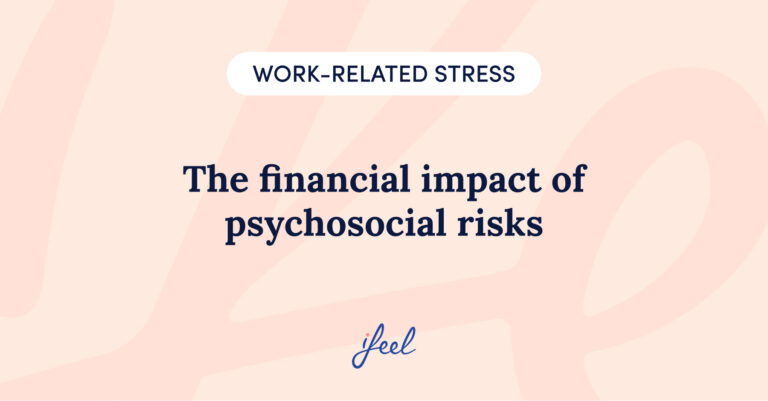There is a classic example of situations that generate competition at work. If you’ve worked in a department store or in the hospitality industry, you’ve heard of it. It’s the debate within work teams about whether tips (or commissions, as they are known in a fancy way) should be distributed individually or split.
The former has an indisputable advantage over the latter: if commissions are distributed on an individual basis, it is possible to see which employee performs best. However, they generate competition and, therefore, have great potential to arouse tensions within the team.
Shared commissions, on the other hand, generate a more relaxed relational environment and encourage cooperation. After all, no matter what happens, if there is a sale, there is bound to be a profit, regardless of who closes that particular sale, so it is in our best interest to help each other because that will multiply the profits. However, shared commissions tend to be perceived by some managers as a source of accommodation for less proactive or agile employees. In addition, they do not make it as easy to see differences in the performance of different employees.

No system is perfect for any company, and each one must make decisions about which work system to promote, depending on its corporate culture and needs. What is clear is that they are all made of people and, therefore, have to deal with the issue of competition at work. We would like to address this issue in this article.
What is competition at work?
Many people wonder what causes competitiveness, why it occurs, or how to solve what we call competition at work as if it were – by definition – a problem faced by companies.
However, we must start from the premise that competing is something inherent to humans (otherwise we would never have emerged from the caves) and, in some way, it is inevitable in the business world. The question is whether we understand competition at work as a war without limits until we manage to impose ourselves on others, or whether we know how to channel it as a healthy tool to ensure that projects progress.
Whatever the case may be, competing is to strive for a prize or to strive to achieve an objective for which others will also strive and which cannot be shared: in a certain sense, it will be only for the first one to reach the finish line. It doesn’t matter if this objective is material (a bonus at the end of the year) or immaterial (to strengthen my position in front of the boss, to satisfy my need to be on top…). The idea of competitiveness makes us think of the famous “There can only be one”.
Moreover, competition at work implies putting my personal resources to work so that my performance exceeds the performance of my colleagues. This way, my personal benefit (the economic and emotional salary I receive in exchange for my performance) will also be higher.
Competing with others or competing with yourself?
Competition at work can be seen from a very self-referential point of view, i.e., paying little attention to what others are doing and focusing a lot on my own work. It can also be focused on the opposite: always being cautious of what others are doing to adjust my performance to theirs, even seeing them as rivals and attacking them if necessary.
In fact, when deciding whether or not to compete with them, we can classify them into three categories:
1. The rival
It is an adversary, someone who hinders the achievement of my objectives, someone who generates problems for me, someone whose benefit is an obstacle for me. In other words, the other is a threat.
2. The partner
The coworker is an ally with whom I have common goals and with whom I compete, forming a team, to achieve them and benefit both of us.
3. Someone indifferent
There is no exchange of influences. I do not need to overcome it, nor do I perceive it as interfering with the achievement of my objectives. This approach is typical of teams in which the members have little interdependence or of teams in which the members do not need to attack each other in order for individualities to excel.
In any case, these nuances have important implications for relationships between colleagues, individual motivation, team cohesion, and, ultimately, for the psychological well-being of all.
Therefore, in this contrast between competing and sharing, we can see that competition at work can awaken the instinct in employees to surpass not only each other but also themselves, which does not necessarily have to be negative but, in fact, is very productive for all parties.
However, when it goes through the wrong channels, it can also awaken in work teams aggressive and hostile impulses that lead colleagues to “harm” each other in order to hinder each other’s performance, seeing each other as enemies instead of people with whom to forge favorable emotional bonds.
Some traits of the competitive person
As there are multiple work contexts, goals, employee incentives, and methodologies to improve productivity, there are also many different ways of competing, carried out by employees with very different characteristics.
However, if we look at the people we consider competitive, or if we look at people in the contexts in which they feel driven to compete with their co-workers, we can locate in them some traits that help explain their behavior.
1. Nonconformity
By definition, someone who competes to achieve a goal, either against themselves or against others, is someone who wants something different and better than what they have now. They are not satisfied with their current performance but feel the need or desire to improve it.
2. Perfectionism
Competing is, in a certain sense, the desire to make it clear that we are better than others, or that we are better than we were ourselves at a previous moment. Competition at work leads us, in this sense, to a more or less intense effort for improvement.
3. Insecurity
Our desire to improve or to be better than our peers often hides a mistrust of our current worth. Seeing others as obstacles to our growth, or even as enemies to be beaten, implies a certain sense of threat towards them.
4. Energy
Within our own abilities, competing to surpass ourselves or those next to us necessarily requires the use of our best skills, mobilizing resources, and taking them beyond comfort in order to achieve the goal we have set for ourselves.
5. Committment
Achieving objectives, especially when they are very valuable or when reaching them is a difficult path (for example, within a competitive context at work) cannot be done without a high level of commitment, perseverance, and emotional connection with what we want or need to achieve.
Emotional well-being for companies
At ifeel, we understand that it is not possible to take care of the company without taking care of the psychological well-being of its employees. To do so, we have an emotional well-being program for companies, designed by our team of occupational well-being psychologists with one main objective: to help companies place employee health at the center of their strategy.
Thanks to this partnership, the people in charge of HR departments can receive personalized, data-driven advice on how to make good decisions in a company to get the most out of the teams they are in charge of and take better care of the psychological well-being of the people in them.
Moreover, this program offers employees a holistic mental health care service structured at different levels according to their needs. This service includes, if required, online psychological therapy with a psychologist specialized in cases like theirs. Try our program today so you can see how it could help you.
We hope you found this post about competition at work interesting. If you would like more information about our emotional well-being program for companies just request it and we will contact your team as soon as possible.







